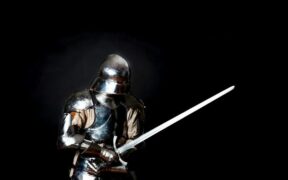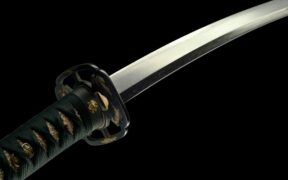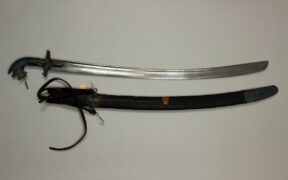Our content features commercial links to our products, committed to transparent, unbiased, and informed editorial recommendations. Learn More
Sword Staff Unveiled: A Deep Look into the Scandinavian Polearm
NO AI USED This Article has been written and edited by our team with no help of the AI
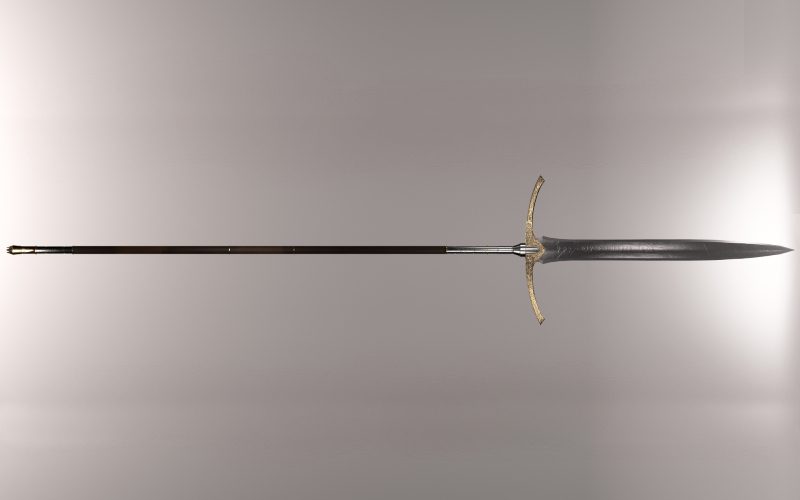
The Scandinavian polearm, sometimes called svärdstav, became the inspiration for several fantasy swords. The staff weapon features a
Let’s explore the origin and history of the
Characteristics of the Svärdstav
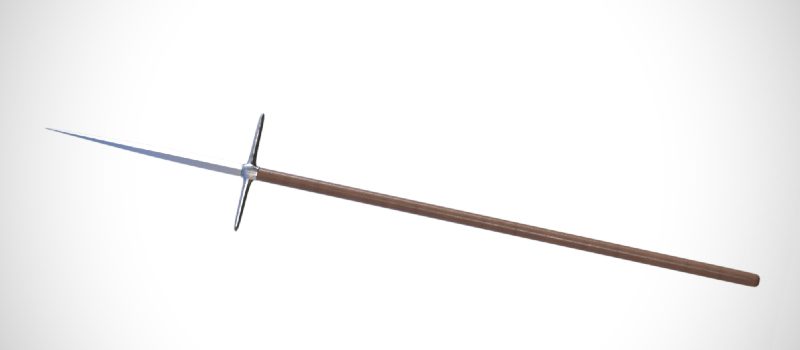
Since the svärdstav features a
Here are the unique characteristics of the
Type of Metal
Some believe that the historical
Blade Appearance
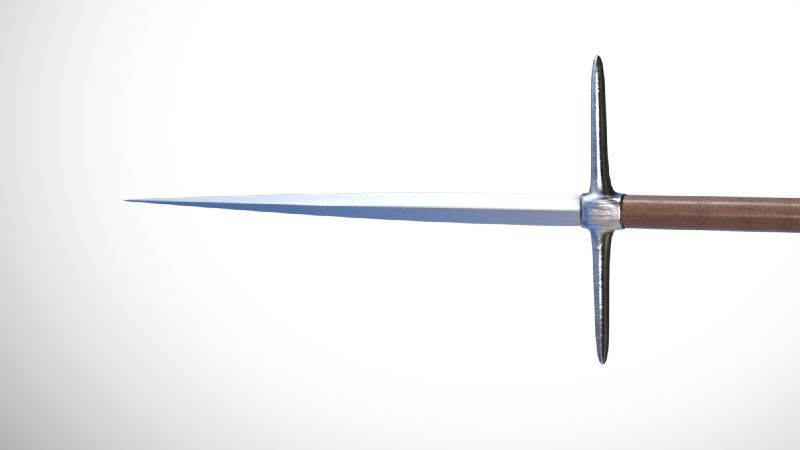
The blade resembles a double-edged short sword and is quite broad and long. Some examples had a rough and uneven blade surface, though modern replicas often have polished blades.
Size and Length
The
Sword Mounting
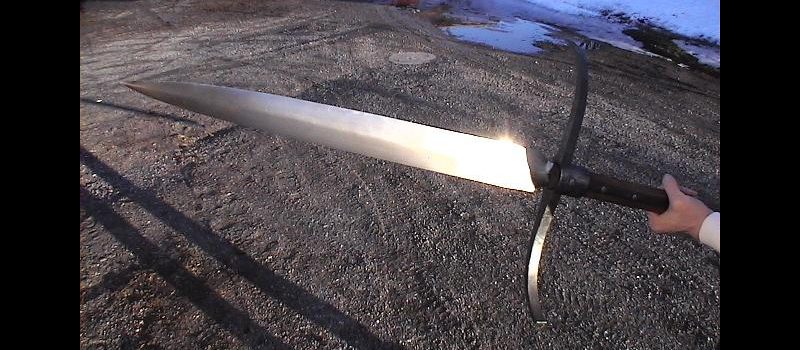
Under the blade, the weapon features an s-shaped or straight crossguard, giving its
The
Facts About the Swordstaff
Throughout history, swords were expensive weapons affordable only to wealthy officers, so polearms equipped ordinary foot soldiers. When wielded with strength and speed, the
Here are the things you need to know about the Scandinavian polearm:
The sword staff originated from Sweden.
The term Scandinavian refers to the countries of the peninsula in northern Europe, particularly Sweden and Norway, as well as Denmark. On the other hand, the term Nordic refers to the Scandinavian Peninsula, including Iceland and Finland. In the 16th century, the Swedish peasant army used the
The Nordic people had the means to produce high-quality weapons.
In the 16th century, the Scandinavian Peninsula and other regions in the North had an abundant resource of excellent steel, which supported the need for weapons like swords, spears, helmets, and armor. Experts suggest that the swordsmiths purposely crafted the
Most information about the sword staff comes from a German Landsknecht’s military sketchbook.
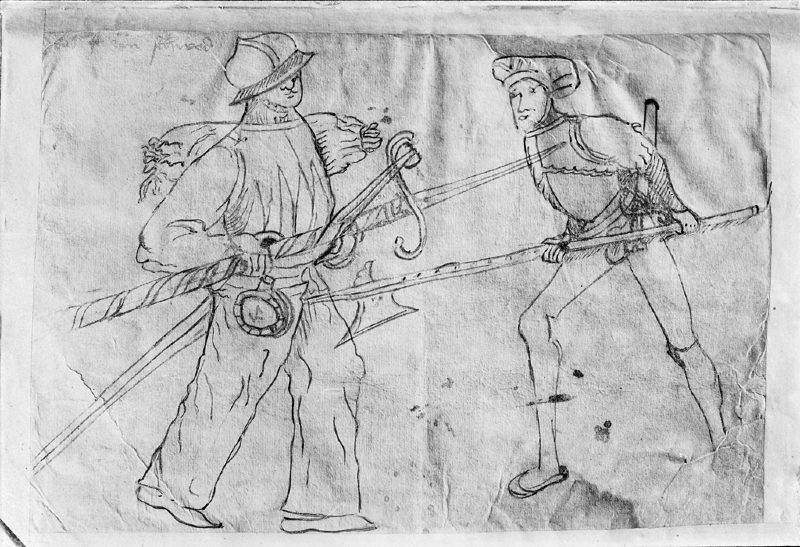
The Landsknechts were German Renaissance mercenaries recognized for their well-trained armies on battlefields of Europe. Landsknecht Paul Dolnstein, who participated in the Danish army, captured his wartime experience in sketches and texts and noted that the Swedish peasants carried good pikes made from swords, which we call today the
The Landsknechts fought in phalanxes of pike.
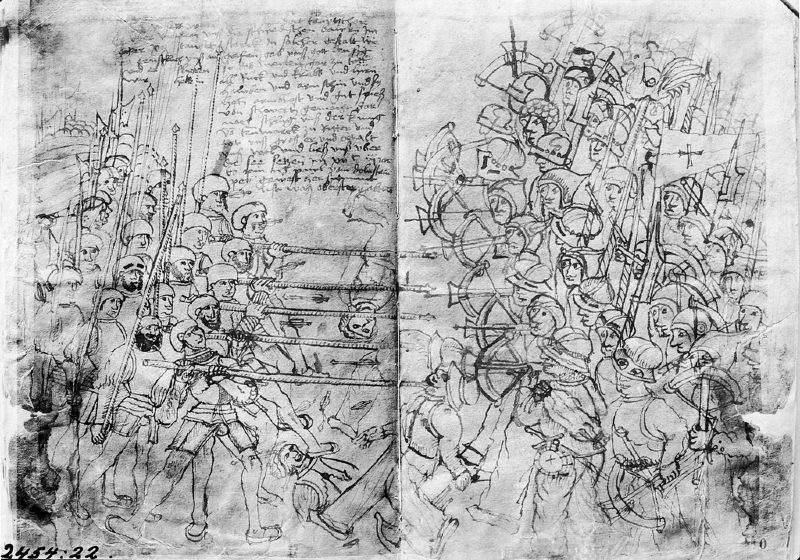
In the military, the phalanx refers to the tactical formation of troops, which march closely and ready to fight. The Landsknechts imitated Swiss warfare methods and incorporated the pikes in their arsenal. Unlike spears, pikes are long thrusting spears but not intended to be thrown.
As seen in Paul Dolnstein’s sketch, the Landsknechts used their pikes against the swordstaffs of the Swedish peasants. Still, the peasant army utilized the
The sword staff was an efficient weapon even for those who lacked soldier training.
As a foot soldier’s weapon, the length of the
Also, the long shaft provides a greater distance between a fighter and an opponent and allows quick thrusts and sweeping cuts. Even if the peasants lacked the training of a typical soldier, they armed themselves with the
The Swedish armies likely utilized the weapon’s crossguard to ward off enemies’ weapons.
The appearance of the crossguard suggests that the Swedish peasant armies used it to displace incoming polearms like halberds. One could catch the enemy’s weapon and then counter with a quick slash with the blade. Experts also suggest that it might have functioned as a trapping and hooking weapon for the opponent’s arms and legs. The Swedish army probably utilized the
There are several types of polearms across the world.
In Europe, the infantry used the glaive, fauchard, and guisarme against the cavalry. By the 14th century, the halberd, featuring a pike and an ax blade, became the primary weapon of the early Swiss armies. A traditional weapon in Chinese martial arts, the guandao is a polearm with a long crescent-shaped blade. The Japanese also had their naginata polearm, equipped with blades similar to katana swords.
History of the Scandinavian Polearm
The svärdstav played a significant role during the Danish-Swedish war of 1501 to 1512. The
In Icelandic Sagas
Icelandic sagas mention several pole weapons, but their names are often translated as a halberd or bill, probably due to lack of a better word. These literary works describe events that occurred in the Viking Age, during the 9th and 11th centuries. Some believe that the
The hewing spear höggspjót seems to be similar to the swordstaff’s function as a weapon. However, its shape and appearance remains a mystery. Its name comes from höggva, a verb that means to strike, and spjót, a common term to describe a spear. It implies that the höggspjót occasionally served as a cutting weapon yet closely related to a spear.
None of the sagas described the appearance of the atgeir, but its name suggests its close association with a spear. Based on the description of its use, the atgeir had wings on its shaft, similar to the cross guards of the
The Battle at Old Älvsborg Castle
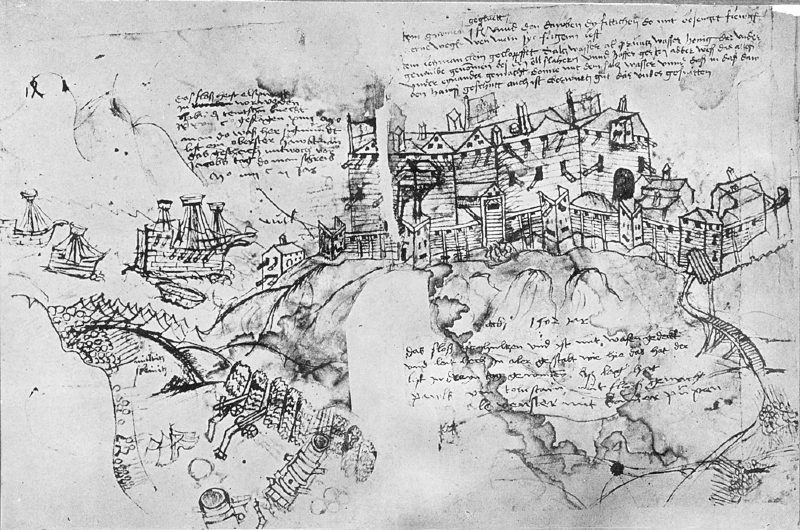
When John I was elected king of Denmark, he also became King of Sweden and Norway according to the terms of the Kalmar Union, which merged the three countries. However, Sweden denied his rule, so the king and his son Christian hired Scottish and German mercenaries to suppress a rebellion in the country.
In 1502, the Swedish peasant armies used their
In 1562 Mad Meg Painting
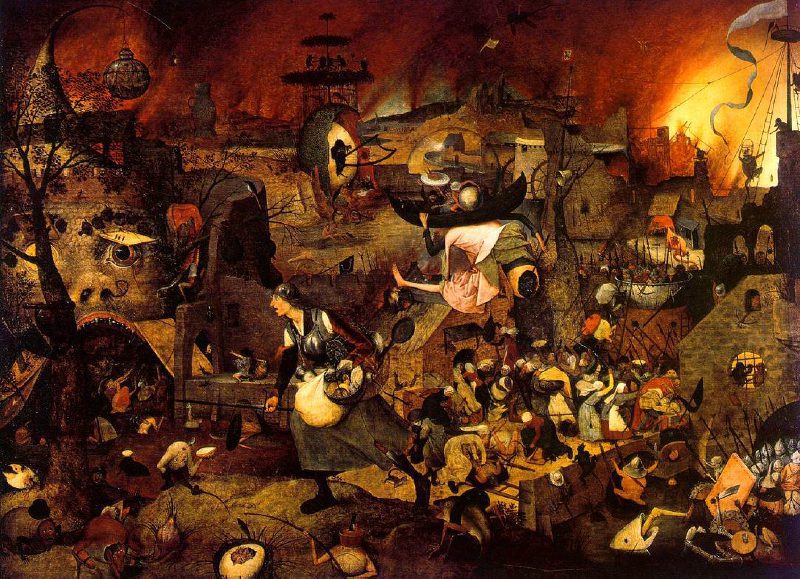
The famous painting Mad Meg by Pieter Bruegel depicted soldiers wielding the
Svärdstav-Inspired Weapons in Pop Culture
The Scandinavian polearm has gained several modern interpretations in films, anime, and video games. In most cases, many creatives incorporate the concept of staff weapons that also function as a
In The Hobbit and the Lord of the Rings film series, the character Gandalf owns a Glamdring
Conclusion
The svärdstav was the Swedish peasant army’s weapon during the 16th century. Today, the Scandinavian polearm remains one of the unique and impressive weapons in history. No wonder it inspired several fantasy swords in our modern time.
